How Long Can You Leave A Cat Alone? Your Questions, Answered
Here's everything you need to know to keep them safe - plus how long is too long to leave them to their own devices!
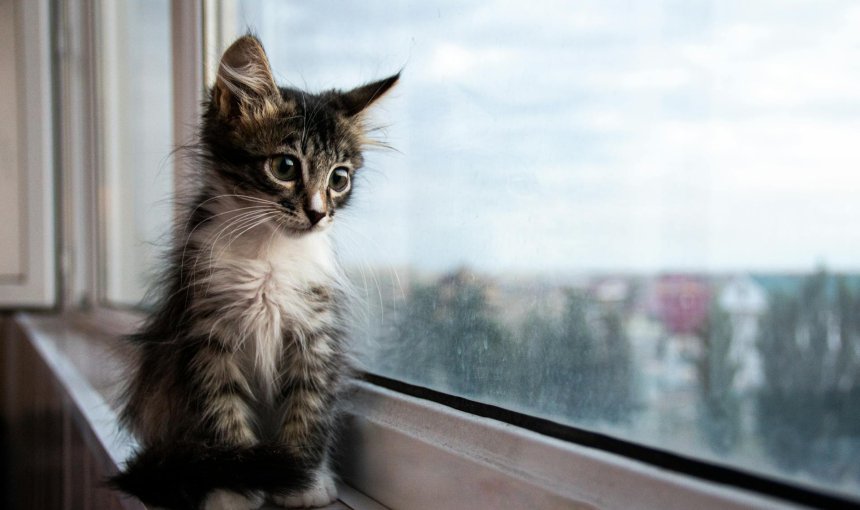
No matter if you’ve just adopted a cat or have had them for years – leaving them home alone to head outdoors can always be a bit heartwrenching! But have you ever wondered: how long can you leave a cat home alone? And is it possible to safely let out your cat while you’re gone? We’ve answered all these questions and more below – plus how you can keep them safe indoors even when you’re not around.
Key Takeaways
Some adult cats can handle being alone for 24 to 48 hours. However, never leave kittens or senior cats by themselves for more than 2 to 4 hours without someone checking on them.
Make sure your cat has plenty of fresh food and water while you’re away. If your cat tends to eat all their food right away, try an automatic food dispenser.
To prevent your cat from getting bored, have some scratching posts and puzzle feeders around to keep them occupied.
The Tractive smart cat collar can help you figure out what your cat is doing while you’re gone by letting you see how much they move and rest. It can also alert you if they try to sneak out of your yard, so you can keep them safe.

Find out where your cat spends their time.
Read more- Key Takeaways
- How long can you leave a cat alone?
- How to find out how long your cat can be safely left alone
- Which cat breeds are best suited to be left alone?
- How to figure out what you cat is up to alone at home
- What you should consider when you leave your cat alone
- What are the alternatives to leaving my cat alone?
- Where a smart cat collar can help prevent an emergency
How long can you leave a cat alone?
How long is too long for a cat to be left alone? Short answer: it can depend on factors like your cat’s age, temperament, and health. So here’s what the vets recommend1:
| Kittens | No longer than 2-4 hours alone |
| Healthy adult cats | 24-48 hours |
| Senior cats | Not recommended without supervision |
In general, kittens need more supervision and regular feeding times. Senior cats might be vulnerable to health issues, needing regular medication timings. With all these factors in mind, it’s always a good idea to ensure there’s someone (even a friend or neighbor) who can prevent your cat from being alone for too long.
While some cat breeds might be better suited to being left alone than others, ultimately each cat is different when it comes to how long they can tolerate being left alone. Meaning before you head off outdoors, it might be a good idea to test out how your cat responds to being alone. Left unsupervised, there’s no guarantee your cat might stay put – boredom, stress, and anxiety can drive them to make an escape attempt the minute you leave them to their own devices.
How to find out how long your cat can be safely left alone
When you first start leaving your cat alone, don’t stay away for very long. Up to 30 minutes is a good test for a new kitten or cat in your home. When you must leave, try staying away a little longer each time and monitor your cat’s reaction. If you notice that your cat’s behavior has changed, or they show obvious signs of protest, you have found their maximum tolerance. Try to keep the time your cat has to spend alone shorter than that.
And of course, once you’re back home, make sure to spend some quality time with your cat – just the two of you. With time, this can help reassure them you haven’t suddenly abandoned them out of the blue!
💡 While the number of hours a cat can remain alone might vary, experts advise against ever leaving a cat on its own for more than 24 hours. If you need to leave your cat for extended periods of time, then check out these alternatives to leaving your cat alone.
Which cat breeds are best suited to be left alone?
Some cat breeds may be better suited than others when it comes to being left alone. According to DPVHS, the following cat breeds are generally easy going, well-behaved and low maintenance, and therefore may be better suited to being alone.
- Persian
- Norwegian Forest Cat
- American Wirehair
- American Shorthair
- Maine Coon
- Russian Blue
Keep in mind, all cats are different and just because they fall into one of the breed groups above, it doesn’t mean they’ll necessarily be happy spending hours without you! Many of these cat breeds also tend to be highly curious, inquisitive, and love to explore – especially the outdoors.
How to figure out what you cat is up to alone at home
You could, for example invest in a pet home camera, especially to monitor if they’re raiding your fridge or venturing a little too close to your front door or past your property fence. When you return home, check for signs of activity. Is your cat’s bed still warm? Or did they claw up your latest IKEA masterpiece?
Finally, look for changes in your cat’s behavior, litter box use, appetite, or grooming habits. These could be a sign that your cat is suffering from loneliness or otherwise having trouble being left alone.
What you should consider when you leave your cat alone
Food & water
In general, your cat needs just as much food when you’re gone as they need when you’re at home. It can be either dry or canned food, depending on what your cat is used to. When leaving canned cat food out, keep it cooled to avoid the risk of it going bad.
Usually, pet parents find out very soon if their new friend will binge on all the food they are given or if they can save some for the next time they get hungry. If you don’t know yet, give your cat twice their regular amount for their next meal. If they stop eating when full – congratulations! You can just put all the food your cat needs during your absence into one bowl. If your cat keeps on eating and eating, consider getting an automated food dispenser that will dish out your cat’s food in perfect portions at designated times.
Also, don’t forget to provide enough clean water for the duration you’ll be away. Ideally, place a couple of water bowls or dispensers in different places throughout your home for your cat.
⚠️ Haven’t left your cat enough to eat while you’re gone? Don’t be surprised if they end up hunting outdoors instead.
Litter box hygiene
This may be convenient to overlook – but cats need a clean litter box. If you forego cleaning the litter box for too long, cats might go to the bathroom outside of the box. We recommend not letting it get to this point, and aim to ensure that the litter box is emptied once a day. (Whether by you, a friend, loved one, neighbor, or cat sitter.)
Activity & entertainment
While you’re gone, your cat will still need plenty of activity and entertainment. Leave enough exciting toys around to keep kitty from scratching your furniture. You could consider the following items for your cat to enjoy (from PetMD):
- Puzzle feeders
- Cat tree
- Cat perch
- Cat toys
- Cozy cat bed
This way, your furball will at least be able to manage their boredom while you are away.
Safety
It’s no secret that cats can get themselves into all sorts of trouble. So to avoid that, ask a friend or neighbor to check in from time to time, to ensure that your cat isn’t stuck, locked somewhere or injured. Leave the contact details of your vet somewhere visible, in case of emergency.
We’d also recommend getting your cat microchipped. This will act like a permanent ID tag for your cat in case they do get lost. (Meaning a vet or a shelter can scan it, find your contact details, and inform you they’ve found your lost cat.)
⚠️ Just watch out: relying on friends, neighbors, or strangers to keep your cat safe might not always be ideal. A microchip can’t track down your cat in real-time or help you take an active role in finding them in case they get lost.
Can I let my cat go outside while I’m gone?
If your home is equipped with a cat flap or door and your cat is already used to being outdoors, you may want to consider letting them come in and out while you’re gone. Just keep in mind that their chances of encountering danger, or never returning home, are much higher if you let them outside on a regular basis.
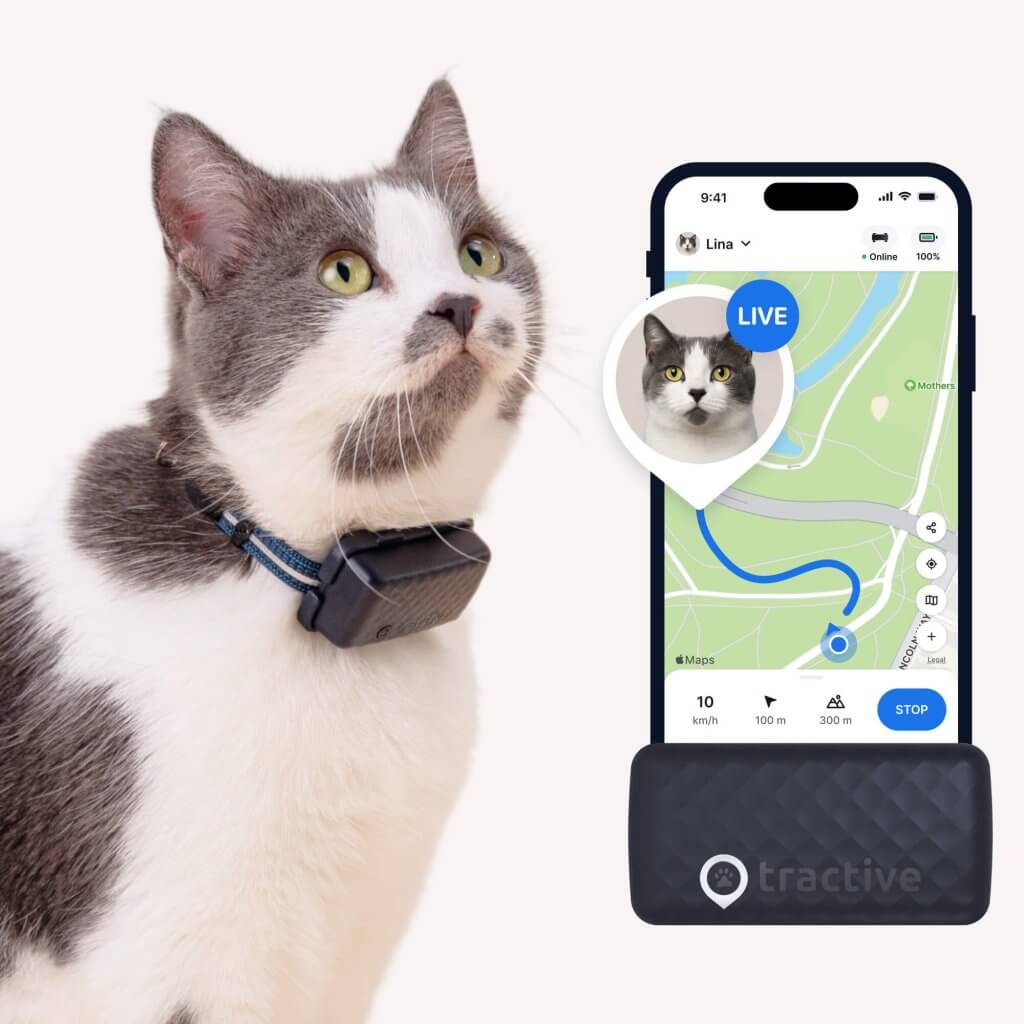
Track your cat wherever they go
Get real-time location information, wherever they go. Find out when they go somewhere they shouldn’t, with Virtual Fences. And discover their favorite spots with Territory.
What are the alternatives to leaving my cat alone?
Cat sitter
Ask a friend to come over every day and spend at least 15-30 minutes at your home to clean the litter box, play, cuddle or just be there and bring some life into the place. Or, you can find a pet sitter who gets paid to spend an agreed-upon amount of time with your feline. That way, your cat can stay in their comfortable home even even while you’re away. Just make sure to inform them about your cat’s:
- Medical history or if they need any medication at certain times of the day
- Feeding schedule
- Any grooming requirements
Cattery or boarding facility
You may also consider taking your cat to a boarding facility where they can stay until you get back. But remember: Cats are generally very territorial, so their home is just as important to them as you are. Separating them from both at once should only be your last resort.
Foster home
In some cases, it may be possible to let your cat stay with a friend or relative while you’re away. Since this can come with its own complications, be sure to only use this option in rare or emergency cases.
Routine
Most cats don’t like change too much. Which means they’ll get through long stretches of your absence better if the rest of their daily routine changes as little as possible. That includes feeding and play time, but also regular litter box cleaning. For example, if you’ve recently shifted homes with your cat, try to spend more time with them at the beginning, since this does count as a major change in their universe. Allow them a bit more time to get used to your new home.
Other tips to keep your cat occupied at home
Some cats also like to have the TV or the radio on when their humans are gone, so they don’t have to sit in silence all day. You might also consider getting a second cat to keep your kitty company when you’re not there. Else, a pheromone plug-in can help to calm your cat’s nerves while you’re away.
Travel with your cat
Are you going on an adventure? Traveling for a few days, weeks or months? Then consider that your cat might enjoy coming along! Start out with short day trips to see how your cat reacts to being on the go. If they handle it well, you can start taking longer trips with your purr-fect travel companion.
Read more: How To Travel With A Cat: Tips For A Fun, Safe Road Journey
Where a smart cat collar can help prevent an emergency
Leaving your cat home alone can be stressful, whether it’s for an hour or a few days. You want to be sure they’re safe, not stressed, and not getting into trouble. That’s where the Tractive smart cat collar can help with your peace of mind, allowing you to check in on their safety, location, and well-being, even when you’re out.
Strapped to your cat’s collar, you can now:
Prevent them from escaping outdoors
Even a strictly indoor cat can surprise you. A cleaning crew, a delivery person, or a curious moment at an open window can lead to a quick escape. But if the worst happens and your cat bolts, the Tractive collar lets you follow their every step right on your phone. You’ll have their LIVE location, which is a massive relief and dramatically cuts down the time it takes to bring them back home safely.
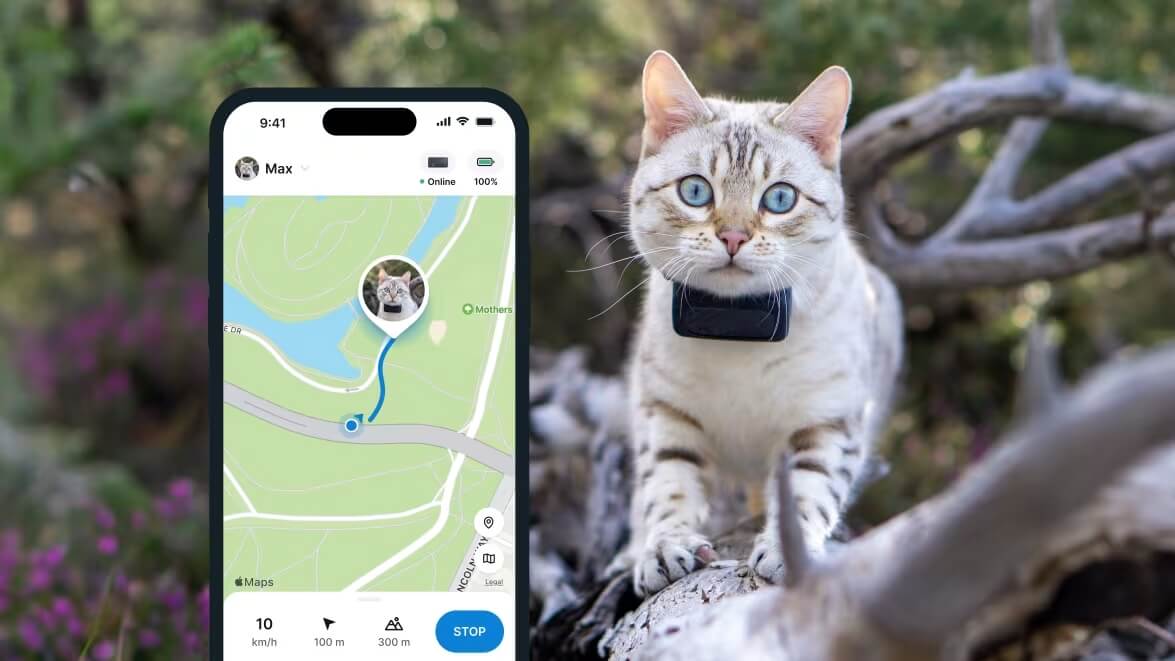
From your app, you can also set up a secure “safe zone” around your house or apartment. If your cat crosses that safe boundary while you’re away, you’ll get an instant escape alert. This is perfect for knowing immediately if they’ve slipped out and need to be found.
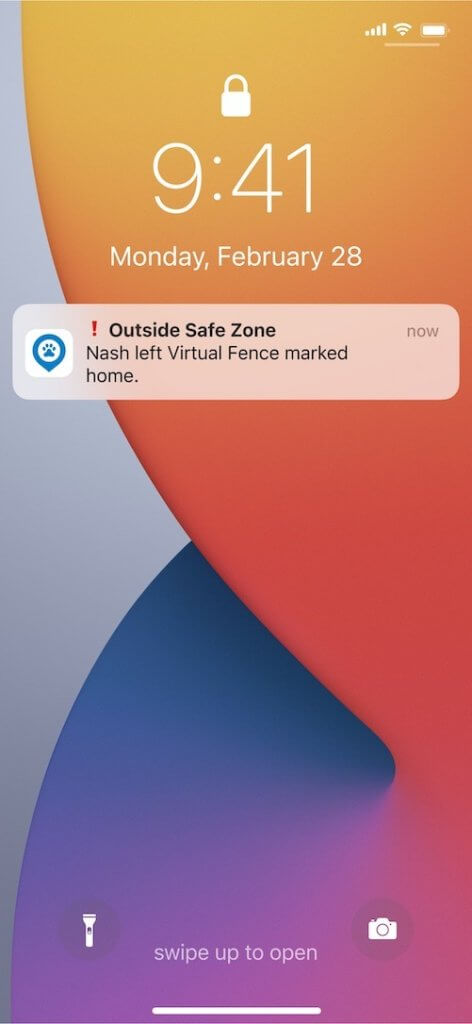

Check how your cat is really doing
Location tracking is great for safety, but your Tractive device also helps you understand how your cat is handling being home alone. With its built-in motion detector, it monitors their movement and rest. Are they sleeping all day long, or are they constantly pacing and stressed? The tracker gives you a clear picture of their routine. If they’re suddenly much less active than usual, it could mean they’re hiding because they are anxious or unwell.
If the change in their activity or sleep is really big, you’ll get a Health Alert on your phone. This is a great signal that they might be experiencing separation anxiety, or perhaps they’ve gotten into something they shouldn’t have.
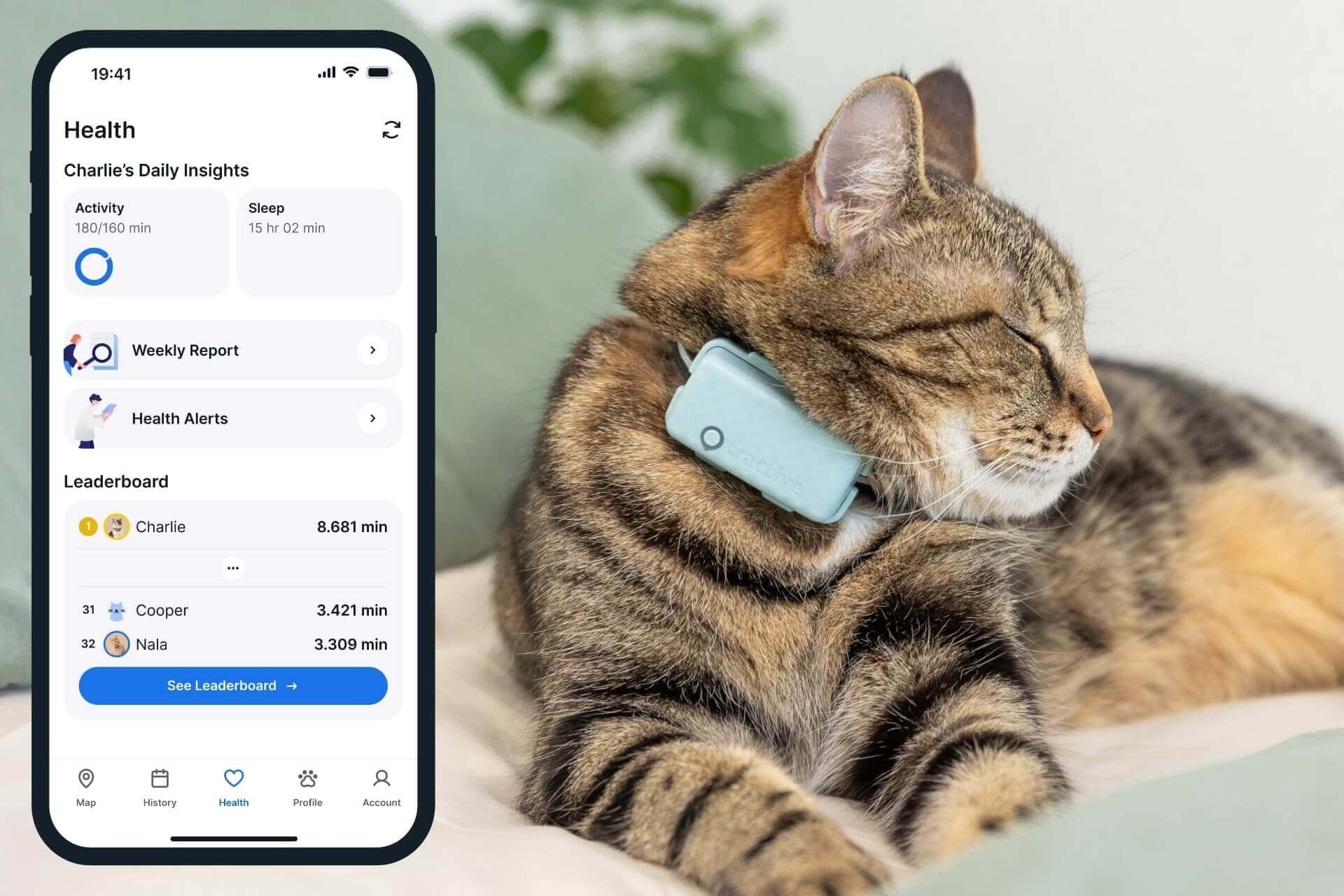
This helps you to adjust your routine, maybe hire a sitter, or just head home knowing exactly how your cat is coping with their alone time.

This post was written by Tina W. – mom of two rescued cats and a Maine Coon. Her love for cats led her to Tractive, where she puts her passion for our purring four-legged friends into practice on the regular.
Besides keeping the Tractive office running like clockwork as Office Manager, she enjoys sharing her expertise (and cat photos!) on the Tractive blog.



